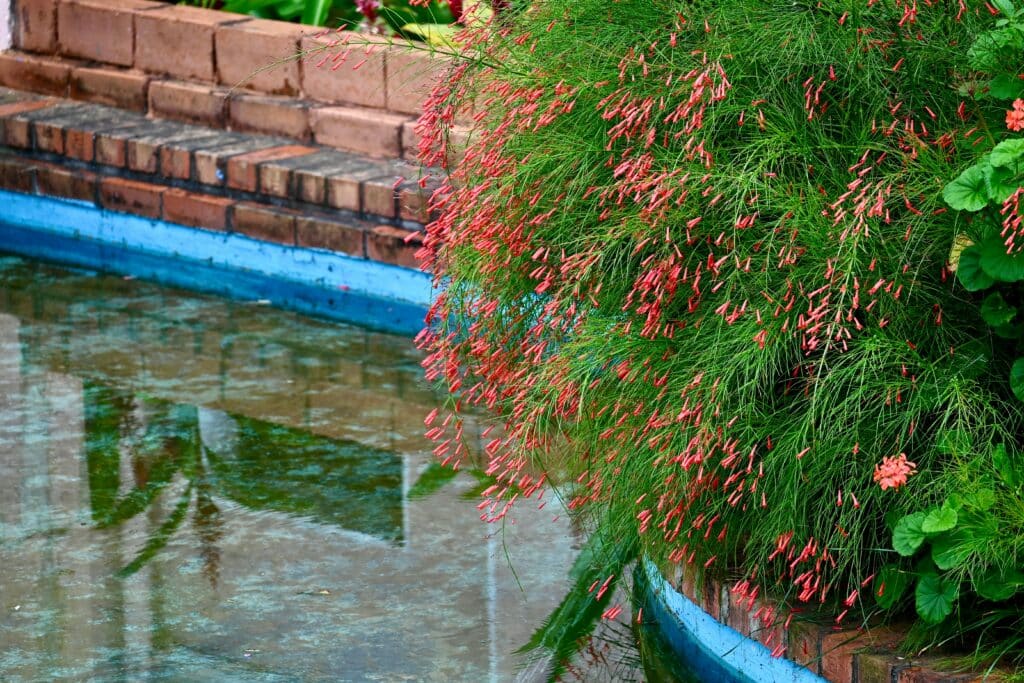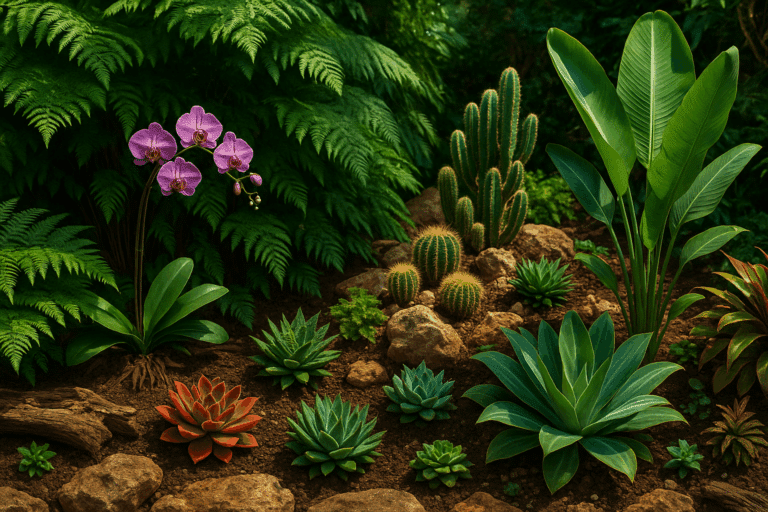This unique, low-maintenance foliage is renowned for its brilliant colors and dynamic versatility. Whether you’re looking to add a splash of color to your home or a touch of elegance to your office space, Coleus Color Popper could be just what you need. The following sections delve deeper into the appeal of this extraordinary plant and provide practical tips on how to grow and care for it in various environments.

Have you ever dreamed of creating a lush, vibrant garden that requires minimal upkeep? Meet the Coleus Color Popper, a plant species that not only delivers on aesthetics but is also surprisingly easy to maintain. With its flamboyant foliage that ranges from deep maroon to bright lime green, this plant can transform any space into a lively, color-filled haven.
We’ll explore in-depth the various aspects of Coleus Color Popper including its origin, its unique characteristics, and the myriad of colors it offers. Learn why this plant is becoming increasingly popular among both amateur and professional gardeners alike. Whether your green thumb is just starting to bloom, or you’re an experienced horticulturist, you’re sure to find value in the comprehensive guidance provided in the subsequent sections.
Finally, the piece will guide you through the care and maintenance of Coleus Color Popper. Despite its exotic appearance, this plant is remarkably resilient, thriving in both sun and shade. Whether you’re planning to adorn your patio, enhance your indoor space, or beautify your garden, get ready to imbibe a wealth of knowledge about this low-maintenance, high-impact plant. Let the journey to a more vibrant garden begin! 🌿🌈🌸
Understanding the Coleus Color Popper
The Coleus Color Popper, scientifically named as Coleus Scutellarioides, is a species of flowering plant native to the tropics. With its radiant and variegated leaves, it is popularly used to add a vibrant, colorful touch to gardens, patios, and indoor spaces. The plant’s unique feature is its foliage, which comes in an array of colors such as deep red, bright yellow, and many shades of green. The leaves often have contrasting hues, creating a striking visual effect.
The term ‘Color Popper’ reflects the plant’s ability to bring a ‘pop’ of color to any setting. Despite its colorful appearance, the Coleus Color Popper is a relatively low-maintenance plant, making it a favorite among gardening enthusiasts and landscape designers alike.
Growth and Maintenance of Coleus Color Popper
The Coleus Color Popper is one of the most adaptable and visually impactful plants you can add to your garden or indoor space. With dazzling foliage that ranges from crimson and magenta to lime green and lemon yellow, this plant thrives with a care routine that is simple yet effective. Below is an in-depth guide on how to ensure your Coleus remains vibrant and lush all season long.
Choosing the Right Spot
Sunlight Matters
While Coleus is known for its adaptability to various light conditions, the intensity and duration of light exposure will dramatically influence its color vibrancy. In general:
- Bright, indirect light brings out the most intense colors.
- Partial shade is ideal for outdoor beds, especially in regions with hot afternoon sun.
- Indoor placement near east- or north-facing windows works well.
- Too much direct sun can lead to faded colors or even scorched leaves.
It’s important to observe your plant’s response and adjust accordingly—coleus leaves are great indicators of whether they’re receiving too much or too little light.
Soil and Drainage Requirements
Nutrient-Rich and Moisture-Friendly
Coleus Color Poppers prefer a loose, well-draining soil that retains enough moisture to stay slightly damp without becoming soggy. A high-quality potting mix that contains peat moss or compost is ideal. If your garden soil is heavy clay or sandy, consider amending it with organic matter to improve its water retention and nutrient content.
For potted plants, be sure the container has sufficient drainage holes to avoid water stagnation.
Watering Practices
Consistency is Key
Watering is one of the most critical care aspects of Coleus Color Popper maintenance. These plants like consistently moist soil but do not tolerate standing water. A few guidelines include:
- Water when the top inch of soil feels dry.
- Water early in the morning to reduce evaporation and fungal risks.
- Reduce watering frequency in cooler months or if the plant is moved indoors.
Inadequate watering may result in drooping or dry-edged leaves, while overwatering can cause root rot—a common and serious issue.
Feeding and Fertilizing
Fueling Foliage Growth
To maintain that lush, explosive color, feed your Coleus every two to four weeks with a balanced, water-soluble fertilizer during the growing season. Avoid over-fertilizing, which can lead to excess leaf production and subdued coloring. For outdoor beds, a slow-release granular fertilizer applied in early spring is usually sufficient for the season.
Pinching, Pruning, and Shaping
Bushier Plants, Better Display
Coleus plants respond well to pinching and pruning. Removing the growing tips encourages the plant to branch out, making it fuller and less leggy.
- Pinch young plants when they reach 4 to 6 inches tall.
- Remove any flower spikes that may appear to keep the plant focused on foliage.
- Trim older leaves or leggy stems to keep the plant tidy and robust.
Regular maintenance helps prevent the plant from getting top-heavy and losing its shape.
Propagation for Expansion
Easy Cloning for More Color
One of the joys of growing Coleus is how easy it is to propagate. You can create new plants from stem cuttings in water or soil. Follow these simple steps:
- Take a 4–6 inch cutting below a leaf node.
- Remove the bottom leaves and place the stem in water or directly into moist potting mix.
- Roots should appear within 7–14 days in water, or in 2–3 weeks in soil.
- Transplant rooted cuttings into containers or garden beds.
This process allows you to multiply your plants and even create new color arrangements with your existing varieties.
Seasonal Care and Overwintering
Keeping Coleus All Year Round
Coleus is usually grown as an annual in temperate climates but can be overwintered indoors with ease:
- Before the first frost, bring potted plants indoors.
- Place them in a warm room with bright indirect light.
- Reduce watering and stop fertilizing during winter dormancy.
- In spring, move them back outdoors gradually to avoid shock.
Alternatively, take cuttings and root them indoors for replanting in the spring.
Pests and Disease Management
Keeping Plants Healthy
While Coleus is relatively pest-resistant, it can occasionally attract:
- Aphids
- Spider mites
- Whiteflies
- Mealybugs
Treat infestations promptly with neem oil, insecticidal soap, or by rinsing the foliage under water. Ensure proper spacing between plants to improve air circulation and reduce the risk of fungal infections like powdery mildew.
Using Coleus in Design
A Garden Designer’s Secret Weapon
Coleus is one of the most versatile plants for design purposes. Here are a few ways to use it creatively:
- As a border plant to define paths or flower beds.
- In containers, either solo or combined with trailing plants and flowers for contrast.
- In vertical gardens or wall planters for a splash of bold texture.
- Indoors, near bright windows to brighten rooms or workspaces.
Mix and match varieties for a striking mosaic of color. Their varied leaf shapes and hues allow them to serve as both focal points and subtle fillers.
Environmental Benefits
More Than Just Pretty Leaves
In addition to visual appeal, Coleus plants help improve air quality and bring a calming natural element to urban spaces. Their fast growth and vibrant appearance also make them ideal for school gardens or therapeutic horticulture programs.
Propagation of Coleus Color Popper
Propagation is the process of growing new plants from the parent plant’s cuttings. It’s an effective method to expand your Coleus Color Popper collection.
Method of Propagation
- Start by choosing a healthy parent plant.
- Cut a 4-6 inch piece from the stem, ensuring it has at least two leaf nodes.
- Remove the leaves from the bottom node and place the cutting in a container of water.
- Change the water regularly to prevent rot and encourage root growth.
- Once the roots have grown to about an inch long, transfer the cutting to a pot filled with well-drained soil.
Common Issues and Solutions
Common Pests and Diseases
The Coleus Color Popper can occasionally be affected by pests like aphids, whiteflies, and spider mites. Using an insecticidal soap or neem oil spray can help control these pests.
Moreover, the plant can also be susceptible to fungal diseases like powdery mildew. Regularly inspecting the plant for signs of disease, maintaining good airflow around the plant, and avoiding overwatering can help prevent such problems.
Design Tips for Using Coleus Color Popper
Outdoor Landscaping
The Coleus Color Popper can be used as a border plant in gardens, creating a colorful edging. They also make excellent focal points in landscape design due to their vibrant colors.

Indoor Display
For indoor spaces, the Coleus Color Popper makes a perfect houseplant. It can be placed near windows for adequate light and paired with other plants for a contrasting color display.
Conclusion
The “Coleus Color Popper” offers a vibrant and attractive solution for every space, transforming your garden into a vivid showcase of hues. This low-maintenance foliage plant not only adds color to your garden, but also breathes life into it, making it an ideal choice for both novice and expert gardeners.
The ease of its care, versatility, and the explosion of colors it provides make the Coleus Color Popper a highly sought-after plant, adding an eye-catching element to any garden design. This foliage plant is an excellent option for those who desire a beautiful garden but have limited time for garden maintenance.
Moreover, its ability to thrive in various conditions and its resilience make it a great investment, ensuring a lasting display of color throughout the seasons. The Coleus Color Popper has proven to be more than just a plant; it’s a means of transforming your space into a vibrant and lively haven.
In the world of gardening, Coleus Color Popper stands out, making a strong case for itself as a must-have for any garden or space. It’s indeed a plant that delivers on the promise of bringing your garden to life. Be ready to embrace the vibrancy and charm this fantastic plant brings to your garden.
Expanding the Canvas of Garden Creativity
Beyond its visual appeal, the Coleus Color Popper serves a variety of roles in the garden that extend far past simple aesthetics. For many gardeners, the plant becomes a living palette, allowing for creative expression and experimentation with color themes and texture contrasts. Its richly patterned leaves offer the same vibrancy as flowers but with greater longevity and durability. Where flowers may wilt or fade with the season, the foliage of Coleus remains vivid for months on end.
One of the standout qualities of the Coleus Color Popper is its adaptability. Whether planted in a sunny spot where it develops deep, saturated hues or in partial shade where the tones appear softer and more nuanced, this plant contributes to a visually compelling scene. Gardeners use it to fill gaps between perennials, as underplantings for shrubs, or even as a centerpiece in containers. Its ability to unify plantings is nearly unmatched.
An Invitation to New Gardeners
Coleus also serves as an educational gateway for new gardeners. Due to its forgiving nature and fast growth, it’s a perfect plant to introduce children or beginners to gardening. Watching the leaves unfurl and deepen in color offers a rewarding sense of progress and care. In schools, community gardens, and senior centers, Coleus is used to inspire environmental curiosity and healing through horticulture.
Additionally, Coleus can play a supporting role in ecological gardening. While not a strong nectar source, its colorful leaves attract attention and draw pollinators when paired with flowering companions. This makes it a valued player in pollinator-friendly gardens, offering diversity and aesthetic structure.
Landscaping and Design Possibilities
From a design perspective, the possibilities with Coleus are nearly endless. Gardeners can create color-blocked schemes using solid-hued varieties, mix and match patterns for a tapestry effect, or outline garden beds with vibrant edges. Coleus is also used in vertical gardens and mounted planters, offering dramatic foliage at eye level. Indoors, it adds a lush, tropical feel to living spaces.
Another advantage is its ease of propagation. With just a cutting placed in water or soil, gardeners can quickly generate new plants. This not only makes Coleus budget-friendly but also perfect for gifting or community planting projects.
Resilience in Varying Climates
In colder regions, Coleus can be brought indoors before the first frost, allowing it to thrive through winter as a houseplant. With adequate light and moisture, it continues to grow until spring. In warm climates, it performs as a perennial, needing only occasional pruning and feeding.
Whether used as a vibrant ground cover, accent foliage in mixed containers, or a bold focal point, Coleus adapts effortlessly. When paired against natural stone or ornamental grasses, it enhances contrast and creates depth in garden compositions.
The Lasting Charm of Coleus
Ultimately, what sets the Coleus Color Popper apart is not just its appearance, but its accessibility and reliability. It empowers gardeners to experiment without fear and rewards care with continual beauty. Every leaf is a brushstroke in the evolving canvas of a personal garden masterpiece.
With such a versatile plant, the journey toward a more colorful, expressive, and engaging garden begins with a simple planting. Let the Coleus Color Popper lead you into a new season of creativity and joy.



